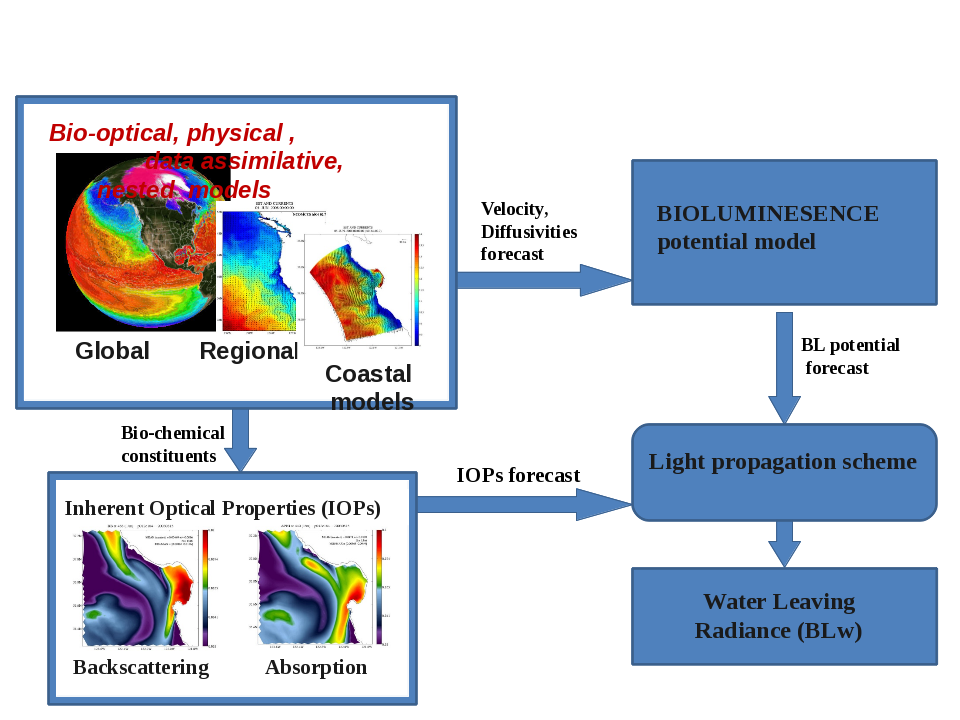United States Naval Research Laboratory
Bio-Optical/Physical Processes and Remote Sensing Section
Bioluminescence Modeling and Forecasting (BLuMFast)

Approach: Approach is based on modeling and data assimilation with nested, coupled physical, bio-optical and bioluminescence potential models. Predictions from physical, bio-optical and bioluminescence models are combined into a methodology for estimating the bioluminescence potential and night time water leaving radiance. Approach is based on joint studies of the bioluminescence potential (BL) and inherent optical properties (IOPs) over relevant time and space scales. Over the past decade comprehensive field studies of bioluminescence have been conducted in Monterey Bay, CA. Some field programs were specifically focused on bioluminescence sampling, when BL was measured with multiple platforms including AUVs, profilers and ships. Concurrent measurements of physical, chemical and optical properties of the water, and enumerations of zooplankton and phytoplankton, were also obtained. These bioluminescence observations together with coupled physical, bio-optical and bioluminescence potential models (described above) are the foundation of the approach to examine our objectives and research issues. The approach and its elements are shown schematically on Figure 1.